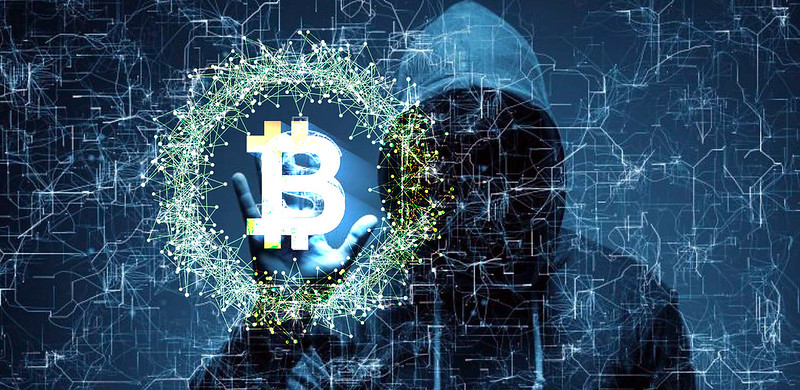In the first quarter of 2024 alone, nearly USD 430 million worth of cryptocurrency was stolen in 50 attacks…
According to a report by blockchain security firm CertiK, in the first quarter of 2025 alone, more than USD 1.67 billion worth of digital assets were stolen in 197 attacks.
More recently in February 2025, a group of North Korean hackers pulled off what is the largest and probably the most daring cryptocurrency heist in history – stealing a whopping USD 1.5 billion in Ethereum tokens from Dubai-based crypto exchange ByBit. In fact, according to Bitcoin native financial services company Unchained, nearly 3–3.8 million Bitcoins have been lost forever. As the value of virtual coins continues to rise, so do thefts, heists, scams, and malware specifically designed to steal crypto.
The ability to transfer it anywhere in the world, the speed of irreversible transactions, and the decentralised nature of virtual currency are what make it so popular with cybercriminals. Plus, they’re difficult to recover once stolen, putting additional pressure on us to keep our crypto safe. This article reviews how to keep your cryptocurrency safe in today’s scam and theft-ridden world.
Using Cold Storage Wallets
Crypto wallets are popular and extremely helpful tools for storing and managing all your private keys and passwords that are linked to your digital assets. While “hot wallets” (online wallets connected to the internet) are popular for storing cryptocurrency because they’re convenient, they’re also more vulnerable to hacking and theft. In an era of everything being online, “cold storage” wallets, that is offline wallets and vaults, are gaining importance for reducing the potential risks of holding digital currency.
These include paper and hardware wallets, which are physical devices that hold private keys and cryptocurrency offline. That being said, one needs to make multiple copies of the physical documents and wallets with their keys and store them in a secure location, such as a home safe or bank vault to prevent physical theft, damage, or loss.
A third option is using a custodial wallet, where a third party holds your cryptocurrency for you in the form of hot storage, cold storage, or a combination of the two. However, not every crypto exchange and platform allows investors to do this.

Strengthening Access
Easy access to one’s online accounts and wallets is one of the most common and easiest ways for hackers and thieves to steal your crypto. Follow good password practices by having unique and strong passwords, which is one of the best ways of ensuring that your accounts and online wallets with cryptocurrency are safe. Another way to help generate and securely store complex passwords is by using a password manager, which greatly reduces the risk of unauthorised access by thieves and hackers.
Another easy way for thieves to access your online wallets and accounts is when it doesn’t have 2FA (two-factor authentication) set up. It offers an extra level of security by making a second authentication approach mandatory in addition to your password, like an app-generated code or a text message on the mobile number associated with the account. Usually, the first level of authorization is entering an account password like any other login, while the second level of authorization is a passcode of some kind being sent to your smartphone or e-mail.
A third, more uncommon way is to have a physical authentication, such as voice/facial recognition or your fingerprints, if your account allows it.
Multi-factor authentication is useful for not just logging in, but also for performing any transactions surrounding your digital currencies.
Constant Vigilance and Due Diligence
In today’s day and date, staying in a state of constant vigilance is the need of the hour. Phishing attacks, hacks, and scams are omnipresent, so you need to take pre-emptive steps to protect yourself from being a potential victim. Pay attention to which website links you’re clicking on and exercise caution when you open emails, especially if you don’t know the sender.
One of the most important things to do is to ensure you don’t enter personal information anywhere that’s insecure or not required. If someone can access even a part of your personal information, chances are that they’re a step closer to accessing your cryptocurrency. Don’t panic and always verify how legitimate the sources are prior to taking any action.
Aside from being thoroughly aware of what you’re doing on the internet, it’s imperative that you complete all stages of due diligence on the online platforms and wallets where you store your digital assets. If a digital currency platform or online wallet has additional protective functions and security features that could prevent theft, then follow the instructions for peace of mind when dealing with your cryptocurrency.

In Closing
Cyber thefts and attacks have become increasingly complex and targeted due to sophisticated pieces of malware. With hackers having adapted strategies to exploit weaknesses in wallets, smart contracts, and DeFi (decentralised finance) platforms, individual users are more vulnerable than ever before right now. The idea is to avoid keeping all of one’s cryptocurrency in one place., utilising a combination of hot and cold storage for your cryptocurrency, and staying constantly vigilant and hyperaware to keep your digital assets safe.
In case you missed:
- Password Practices For A Safe Digital Presence
- Should I Use An Anonymous Crypto Wallet?
- Keeping Your Tech Tidy: Tips For Data Backup And Safety
- Phantom Wallet: The Fastest-Growing Crypto Wallet
- A Beginner’s Guide to Cryptocurrency Trading in India – Part 2
- Let The Games Begin: All About Crypto Gaming
- A Beginner’s Guide to Cryptocurrency Trading in India – Part 1
- The Era of Oversharing Online: Data Privacy Concerns
- Cryptography in Network Security – Concepts and Practices
- Everything you need to know about Pi Network











